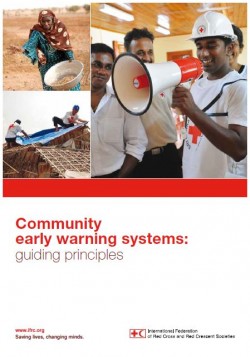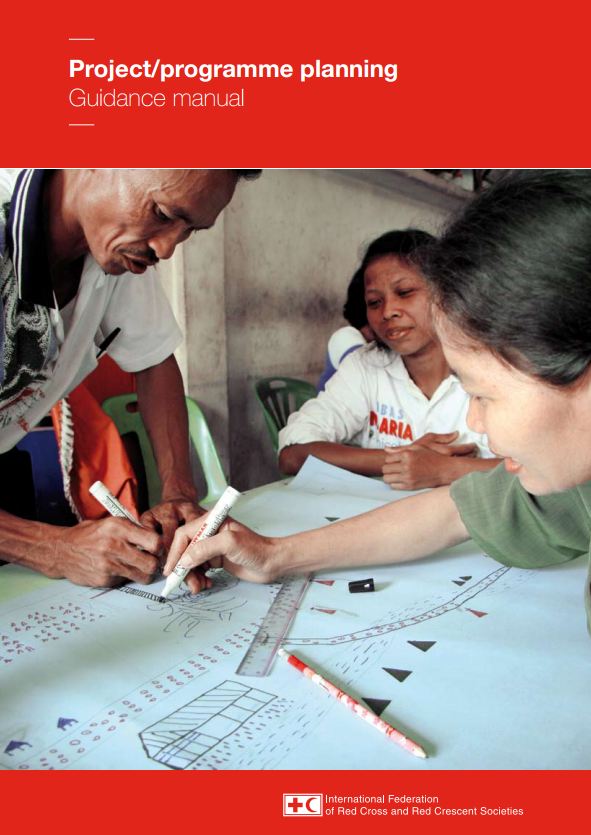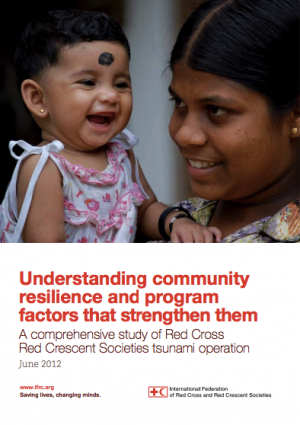The Community early warning systems: guiding principles is one of a set of guides, along with the guides for vulnerability and capacity assessment (VCA) and public awareness and public education. It also joins the Disaster response and contingency planning guide to provide a solid toolkit for the disaster risk reduction/management practitioner.
This guide is accompanied by the Community-early warning system (CEWS) toolkit (in the form of a training of trainers field guide).
Purpose
This guide aims to provide an overview of successful practice from the field for the disaster risk reduction/ management practitioner interested in early warning systems (EWS). It presents guiding principles that will build a strong foundation for the design or strengthening of EWS at any level. It is not an operational, but a strategic, guide that insists on asking the right questions and exploring all perspectives prior even to deciding whether or not early warning is the appropriate tool for a given context.
Overall, this guide aims to inspire readers to take simple integrated steps towards sustainable EWS that make clear contributions to community-level risk reduction and saving lives and livelihoods.
Overview
An EWS has four interlocking parts: risk knowledge, monitoring, response capability and warning communication. Each part must function efficiently for the system to be successful. Guiding principles that should help when considering the appropriateness and feasibility of an EWS effort are:
- integrating within disaster risk reduction (DRR) (EWS is not a stand-alone);
- aiming for synergy across community, national and regional/global levels;
- insisting on multi-hazard EWS;
- systematically including vulnerability;
- designing EWS components with multiple functions;
- accommodating multiple timescales;
- embracing multiple knowledge systems;
- accounting for evolving risk and rising uncertainty;
- EWS without borders (targeting the full vulnerability and hazard-scape);
- demanding appropriate technology;
- requiring redundancy in indicators and communication channels;
- targeting and reaching disadvantaged and vulnerable groups;
- building partnerships and individual engagement.
Audience: Red Cross Red Crescent staff and volunteers, as well as NGO partners and practitioners at any level that are preparing to support governments that choose to build or strengthen EWS closely connected to at-risk communities, at local, national, regional or global levels.
For guidelines in other languages, click here French, size 1 MB; Russian, size 5 MB; Arabic, size 15 MB; Spanish, size 10 MB.
Citation: International Federation of Red Cross and Red Crescent Societies (2012). Community Early Warning Systems: Guiding Principles (pp. 1-84).
![]()




